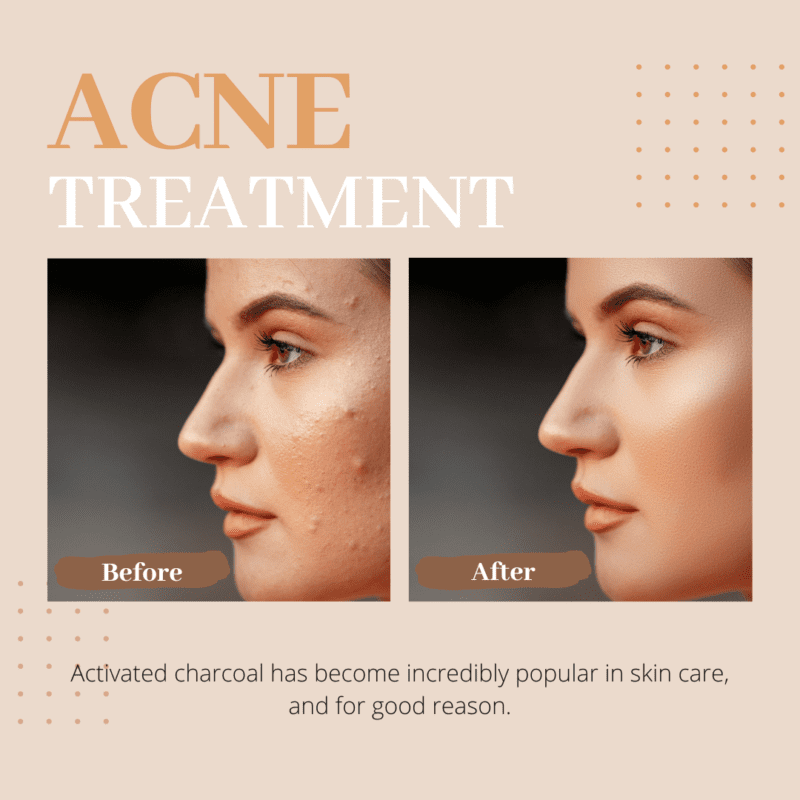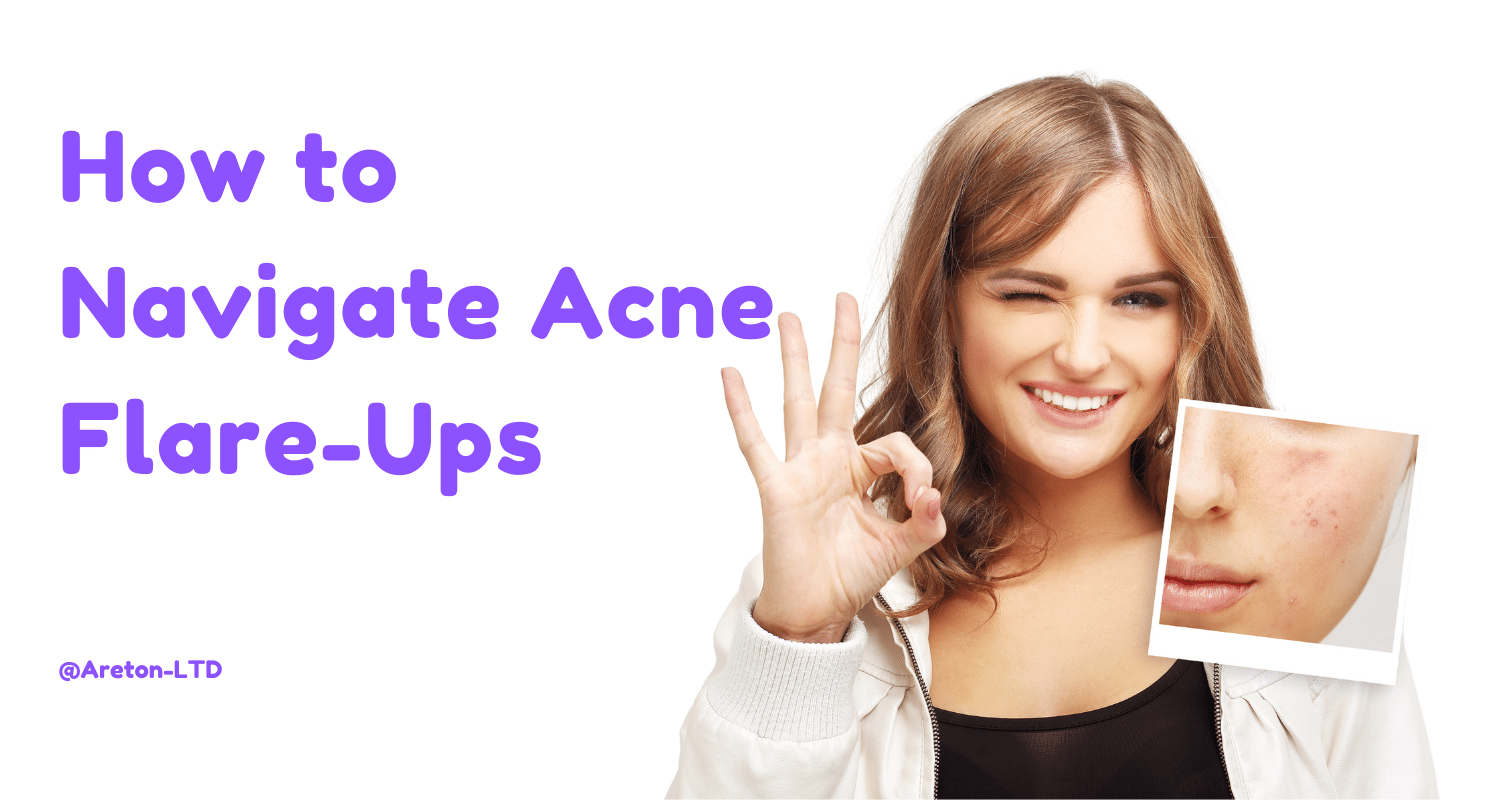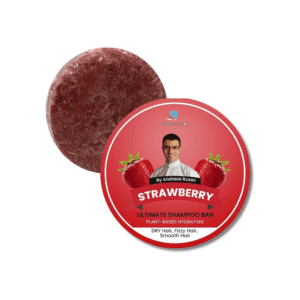What is Skin Purging?
Skin purging is a common side effect that can occur when using certain active skincare ingredients like retinoids, alpha hydroxy acids (AHAs), and beta hydroxy acids (BHAs). Purging happens when these ingredients increase the rate of skin cell turnover, which brings clogged pores and underlying acne to the surface.
Purging is not the same as breaking out. While they may look similar, purging is caused by accelerated skin renewal that pushes out congested skin cells and pimples that were already forming under the skin. Breakouts happen when your skin reacts badly to a product and new blemishes develop as a result.
During purging, increased cell turnover leads to a temporary flare-up of acne and blemishes. You may notice more blackheads, whiteheads, pimples, and inflammation emerging on the skin over the first few weeks of using a new active skincare ingredient. Skin going through purging is not having an adverse reaction, but rather experiencing a process that leads to improvement in skin congestion and acne.
Signs of Skin Purging
Skin purging occurs when you start using a new skincare product that increases skin cell turnover, such as retinol, vitamin C, alpha hydroxy acids, or beta hydroxy acids. Purging generally happens within 2-6 weeks of incorporating the new product into your routine.
Some signs of skin purging include:
Whiteheads and clogged pores surfacing – You may notice white bumps and congestion coming up, as the increased cell turnover brings debris trapped deep in pores up to the surface. This is a sign the product is working to clear and renew your skin.
Breakouts concentrated in usual acne-prone areas – The whiteheads and breakouts often appear in areas you typically get acne, like the forehead, chin, and cheeks. This localized breakout pattern points to purging rather than an all-over acne flare-up.
No cystic acne – Purging consists of small whiteheads and bumps, not large, inflamed, painful cysts. The appearance of cystic acne may indicate the product is irritating your skin rather than causing it to purge.
Blackheads may increase initially – With increased cell turnover, your pores can squeeze out excess sebum and dead skin cells, causing a temporary increase in blackheads. Continued use of the product should help minimize pores and blackheads over time.
So in summary, look for white bumps, clogged pores, and minor breakouts in your usual problem spots within the first month or two of using a new skin-renewing product. This is likely just purging and a sign the product is working!
How Long Does Skin Purging Last?
When you first start using certain skin care ingredients like retinoids, AHAs, BHAs, or vitamin C, it’s common to experience some initial breakouts and irritation. This is referred to as “purging” and is actually a sign that the product is working.
Purging usually lasts between 2-6 weeks as your skin adjusts to the new product. However, it can last up to 3 months when using prescription retinoids like tretinoin or isotretinoin.
During this purging period, your skin pushes out built-up impurities, dead skin cells, and congestion from below the surface. The increased cell turnover leads to whiteheads, blackheads, and inflammatory acne as all the “gunk” makes its way out.
It’s important to be patient during this phase. While purging can be frustrating, try to focus on the light at the end of the tunnel – clearer and glowing skin! As long as you don’t experience severe irritation, inflammation or an allergic reaction, stick with the new product for at least 6-8 weeks to see results.
Difference Between Purging and Breakouts
Purging and breakouts can seem similar on the surface, but there are key differences to understand.
Purging occurs when a new skincare product increases cell turnover in the skin. This brings clogged pores and impurities to the surface quicker, which can initially look like acne. However, purging breakouts are concentrated in your usual problem areas where you tend to get acne.
In contrast, an acne breakout from irritation or allergy can happen anywhere on your face. It’s not limited to your typical breakout zones. Irritation breakouts are caused by your skin having a negative reaction to an ingredient in a product. This triggers inflammation, leading to redness, bumps, and pimples. An allergic reaction can also cause hives, itching, and swelling along with acne lesions.
So in summary – purging usually happens where you normally break out due to increased cell turnover. Breakouts from irritation or allergy can occur anywhere and stem from your skin having an adverse response. Evaluating the location and cause of any acne flare-up can help you decipher if it’s purging or true breakouts.
Tips to Minimize Purging
When starting a new skincare routine, it’s best to introduce active ingredients slowly to minimize potential purging effects. Here are some tips:
Start by using the product once or twice a week, then gradually increase frequency based on skin tolerance. Applying a product less often gives your skin time to adjust.
Buffer active ingredients by applying moisturizer first. The moisturizer acts as a barrier so the active doesn’t penetrate as deeply, making it less irritating.
Use a gentle, non-abrasive cleanser to avoid stripping your skin. This will minimize dryness and peeling.
Drink plenty of water and eat a skin-healthy diet with antioxidants. This supports skin renewal.
Don’t pick or pop pimples, as this can worsen inflammation and lead to scarring. Instead, use a spot treatment specially formulated to treat acne.
If your skin becomes too irritated from purging, take a break from the new product for a few days until your skin calms down. Then reintroduce it slowly.
Apply a soothing moisturizer with niacinamide, green tea, aloe vera or centella asiatica to help calm irritation from purging.
Starting an active ingredient slowly and taking care of your skin during the adjustment period can help minimize purging for clearer, healthier skin over time.
Should You Stop Using the Product?
When your skin starts purging from a new product, it can be tempting to stop using it. However, it’s important to stick with the product for at least 4 weeks before deciding to quit.
Purging is a sign that the product is working to bring clogged pores and impurities to the surface. This gets worse before it gets better. If you stop too soon, you won’t give the product enough time to do its job and improve your skin long-term.
Give the product about 4-6 weeks before assessing whether it’s right for your skin. Purging often peaks around weeks 2-4, then improves. If you’re still breaking out with no signs of improvement after 6 weeks of consistent use, the product likely isn’t right for you.
Don’t stop a product too quickly or you may miss out on its potential benefits. Be patient through the ugly purging phase. If it continues longer than 6 weeks with no improvement, then it’s time to try something else. Monitor your skin’s progress and give the product a fair chance to work.

Other Ways to Manage Purging
One way to help manage purging is to use hydrocolloid bandages on pimples. Hydrocolloid bandages help absorb fluid and promote healing. They protect the blemish from bacteria and picking, while keeping it covered. This can help reduce inflammation and speed up healing time. Simply apply a hydrocolloid bandage on clean skin over a popped or unpopped pimple at night. Remove in the morning and apply a new one if needed.
It’s also best to avoid harsh scrubs during the purging period. Scrubs can further irritate and inflame skin that is already going through increased sensitivity. Stick to gentle cleansers and avoid any abrasive scrubs until purging subsides. Over-exfoliating while purging can worsen breakouts and prolong the process. Be gentle with your skin as much as possible.
Purging Myths
One common myth about purging is that it’s a sign that the product is working or effective. However, this isn’t necessarily true. Purging occurs because an active ingredient like retinol or benzoyl peroxide is irritating your skin, causing increased cell turnover and bringing acne to the surface. Just because a product makes you purge does not mean it will be effective at treating acne long-term. The purging reaction is not an indication of strength or results.
Similarly, the severity of the purging does not indicate how strong or concentrated an active ingredient is. Some people experience severe purging from products with lower percentages of actives. The intensity of the purging is dependent on your individual skin and its sensitivity level. A bad purging reaction could mean the active ingredient is too harsh for your skin type. Don’t assume that a serious bout of purging means the product must be very potent.
When to Seek Help
If you experience severe irritation, swelling, or cystic acne while purging, it’s best to consult a dermatologist. Purging should not cause excessive redness, pain, or large, deep blemishes. Mild to moderate acne and whiteheads are normal during the process.
You should also seek medical advice if purging lasts longer than 8 weeks. Purging typically subsides within 4-6 weeks as your skin adjusts to the new product. Persistent breakouts beyond this timeframe could indicate the product is simply not right for your skin type.
Schedule an appointment with your dermatologist if:
- Purging symptoms last longer than 2 months
- You develop painful cystic acne or swelling
- Your skin becomes severely irritated or inflamed
A dermatologist can help determine if you need to switch products or if your current acne treatment plan needs to be adjusted. Don’t try to “push through” severe purging on your own without guidance. Seek professional help to find the right solutions for your skin.
The Bottom Line
Purging is a common side effect when starting new skincare products, especially those containing ingredients like retinoids, alpha hydroxy acids, and beta hydroxy acids. While purging can be frustrating, try to have patience and let the product work through the initial flare-up. Purging usually subsides within a few weeks as your skin adjusts to the active ingredients.
Give a new product 2-3 months before deciding whether it’s right for your skin. Stop using it if you experience severe irritation, cystic acne, or no improvement after 3 months. See a dermatologist if you’re concerned the flare-up seems abnormal or extreme. With professional help, you can determine whether it’s purging or if you need to try a different treatment.
While purging is a nuisance, it’s often a sign the product is working to increase cell turnover and clear out congested pores. Try to focus on the end goal of clearer, glowier skin. With some perseverance during the ugly duckling phase, you’ll soon emerge a beautiful swan!





